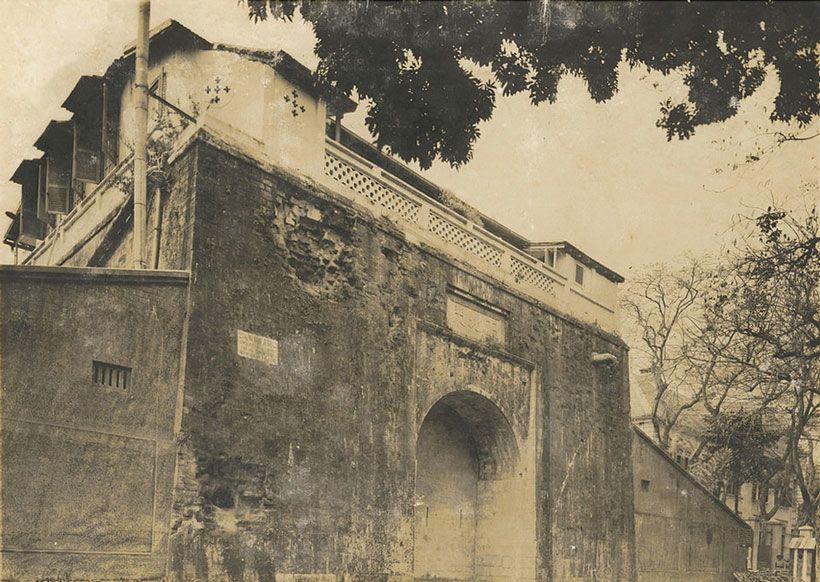The door edge is made of rectangular stone, the upper border is made of stone decorated with lotus petals. Above the main door arch is a stone plaque with three Chinese characters “Chinh Bac Mon”, the stone border is decorated with embossed flower vines. Next to it is a stone plaque dated April 25, 1882 and 2 cannonball marks, traces of the French colonial invasion of Bac Ky and the resistance of our army and people at that time.
The southern face has a border decorated with lotus flowers made of stone slabs. The lotus petals are large and blunt, with three layers of spiral patterns inside. The middle of the lotus petals shows a fiery knife. This side also has two stone gutters decorated with spiral cloud patterns.
Although the North Gate was built by the Nguyen Dynasty, at the foot of this majestic citadel gate are layers of citadel relics from previous dynasties, affirming the continuity in the thousand-year history of the Imperial Citadel.

North Gate relic before restoration.
In 1998, at the Bac Mon relic, at a depth of 1.66m and 2.20m, archaeologists also found many architectural vestiges, including traces of a section of the citadel wall built of stone and bricks.
Currently, on the North Gate watchtower, there is a shrine to the two governors Nguyen Tri Phuong and Hoang Dieu who sacrificed their lives when Hanoi fell into the hands of the French. Many people still regularly go to the North Gate watchtower to burn incense in memory of the two heroic men - the people whose names were respectfully given to the two modern roads running on the left and right sides of the ancient citadel.
Nowadays, Bac Mon has become an interesting tourist attraction for domestic and foreign tourists. This is not only a remaining relic of Hanoi Citadel but also a testament to the heroic struggles of Hanoi people and army in the early days against the invasion of French colonialists who occupied Hanoi.
Source: https://special.nhandan.vn/ditichchinhbacmon/index.html




![[Photo] General Secretary To Lam attends the 1st Congress of the Central Party Committee of the Fatherland Front and Central Mass Organizations](https://vphoto.vietnam.vn/thumb/1200x675/vietnam/resource/IMAGE/2025/9/23/2aa63d072cab4105a113d4fc0c68a839)




























































































Comment (0)